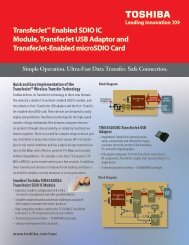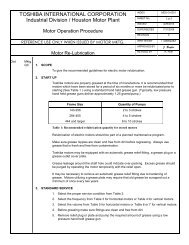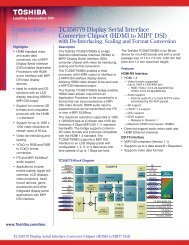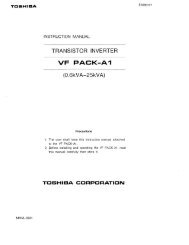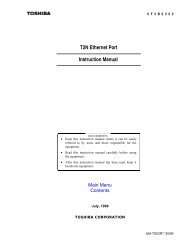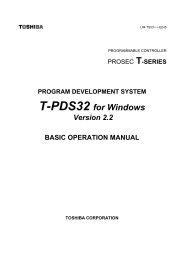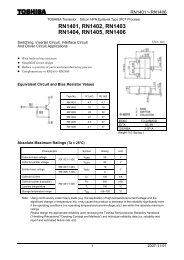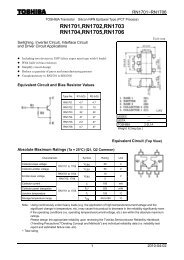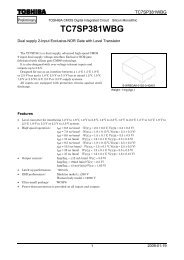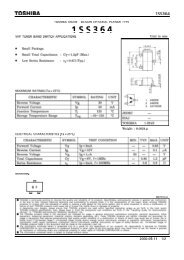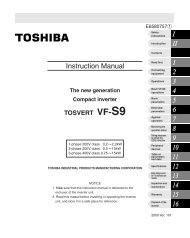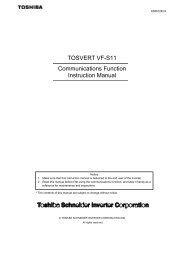VF-FS1 Industrial Inverter - Toshiba
VF-FS1 Industrial Inverter - Toshiba
VF-FS1 Industrial Inverter - Toshiba
You also want an ePaper? Increase the reach of your titles
YUMPU automatically turns print PDFs into web optimized ePapers that Google loves.
E-25<br />
E6581381<br />
[Parameter setting]<br />
Title Function Adjustment range Default setting<br />
<br />
<br />
<br />
<br />
Motor electronic thermal<br />
protection level 1<br />
Electronic-thermal protection<br />
characteristic selection<br />
Motor electronic-thermal<br />
protection level 2<br />
Motor 150%-overload time<br />
limit<br />
Thermal memory selection<br />
10 – 100 (%) / (A) 100<br />
Setting<br />
Overload Overload<br />
value<br />
protection stall<br />
0 ×<br />
1 Standard <br />
2 motor × ×<br />
3<br />
× <br />
4<br />
5<br />
6<br />
7<br />
<strong>VF</strong> motor<br />
(special<br />
motor)<br />
<br />
<br />
×<br />
×<br />
×<br />
<br />
×<br />
<br />
0: Disabled<br />
1: Enabled<br />
10 – 100 (%) / (A) 100<br />
10 – 2400 (s) 300<br />
* : valid, × : invalid<br />
1) Setting the electronic thermal protection characteristics selection and<br />
motor electronic thermal protection level 1 , 2 <br />
The electronic thermal protection characteristics selection is used to enable or disable the motor<br />
overload trip function () and the overload stall function.<br />
While the inverter overload trip () will be in constant detect operation, the motor overload trip ()<br />
can be selected using the parameter <br />
Explanation of terms<br />
Overload stall: This is an optimum function for equipment such as fans, pumps and blowers with<br />
variable torque characteristics that the load current decreases as the operating speed<br />
decreases.<br />
When the inverter detects an overload, this function automatically lowers the output<br />
frequency before the motor overload trip is activated. This function operates a<br />
motor at frequencies that allow the load current to keep its balance so that the<br />
inverter can continue operation without being tripped.<br />
[Using standard motors (other than motors intended for use with inverters)]<br />
When a motor is used in the lower frequency range than the rated frequency, that will decrease the cooling<br />
effects for the motor. This speeds up the start of overload detection operations when a standard motor is<br />
used in order to prevent overheating.<br />
<br />
0<br />
5



